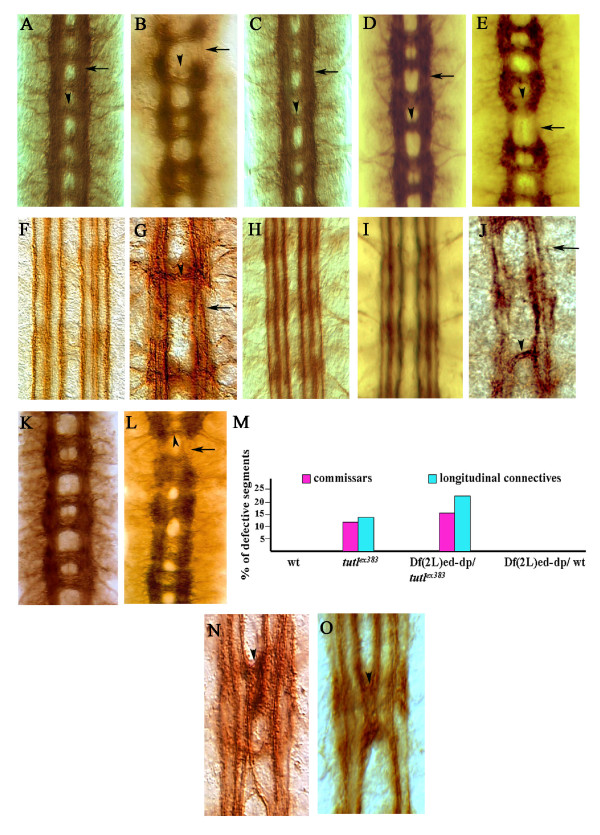Figure 2.
turtle is involved in promoting midline crossing. (A) Wild-type embryonic longitudinal connectives (arrow) and commissures (arrowhead) stained with BP102 antibody. (B) tutlex383 homozygous embryos have fragmented connectives and missing commissures (arrowhead and arrow, respectively). (C, D) Both Elav-Gal4 (C) and Sim-Gal4 (D) expression of the different turtle isoforms fully rescues the tutlex383 longitudinal connective (arrow) and commissure (arrowhead) defects. (E) No rescue of those phenotypes is observed with non-midline glia driver Repo-Gal4. (F) The ventral nerve cord in wild-type embryos has FasII-positive fascicles that are well-formed and do not cross the midline. (G) tutlex383 homozygous embryos have FasII-positive fascicles that are fragmented (arrowhead), with axons that cross the midline (arrow). (H, I) Elav-Gal4 (H) and Sim-Gal4 (I) expression of the different turtle isoforms fully rescues the tutlex383 FasII-positive fascicle defects, preventing fascicles from fragmenting or crossing the midline. (J) No rescue of longitudinal connectives (arrow) and commissures (arrowhead) phenotypes is observed with non-midline glia driver Repo-Gal4. (K-M) Df(2L)ed-dp/wild type (wt) embryos have normal commissures and longitudinal connective (K, M); however, embryos trans-heterozygous for the same genomic deficiency over the tutlex383 allele in Df(2L)ed-dp/tutlex383 have commissure and longitudinal (arrowhead and arrow, respectively) connective defects that are similar to those of tutlex383 homozygous embryos (L, M). (N) Sca-Gal4 pan-neuronal overexpression of only the diffusible turtle isoforms causes entire innermost FasII-positive fascicles to cross the midline (arrowhead. (O) Sim-Gal4 overexpression of the diffusible turtle isoforms produces similar defects (arrowhead) to Sca-Gal4, even though, in this case, turtle is expressed only in the midline cells and not in FasII-positive tracks.

